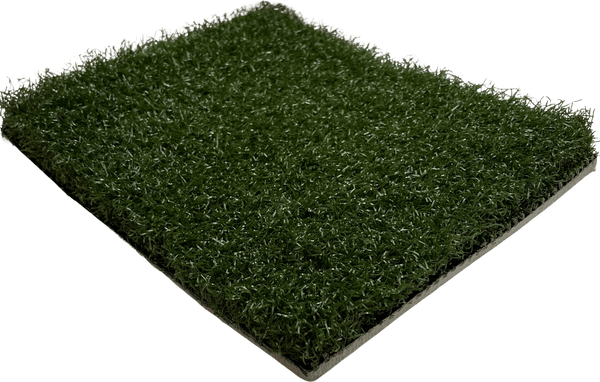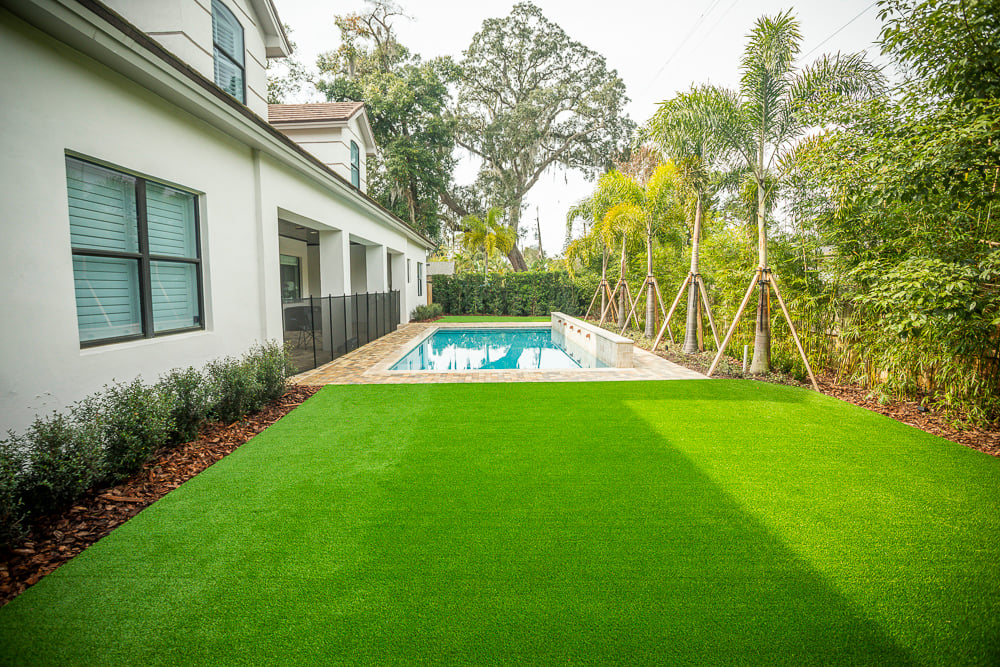Explore the Environmental Advantages of Opting for Synthetic Grass Solutions
The adoption of synthetic turf solutions offers an engaging opportunity to address pressing ecological difficulties. By dramatically lowering water use and minimizing the application of damaging chemicals, these alternatives not only advertise sustainable landscaping yet also secure neighborhood ecological communities.
Water Preservation Benefits
One of the most considerable benefits of synthetic lawn is its ability to save water. Typical turf yards require considerable irrigation, especially in locations vulnerable to dry spell or water limitations. On the other hand, man-made grass does not need watering, significantly lowering the total need for water resources. This feature is specifically beneficial in dry regions where water deficiency is a pushing issue.
By eliminating the requirement for regular watering, synthetic grass adds to sustainable landscape techniques and helps minimize the environmental influence of excessive water intake. The preservation of water expands to the reduction of overflow, which can lead to dirt erosion and waterway contamination.
In addition, the installation of man-made turf allows property owners and districts to allocate water resources extra efficiently, concentrating on necessary uses such as drinking water and agriculture. The change in the direction of synthetic grass not only promotes accountable water use yet additionally aligns with broader environmental goals aimed at protecting all-natural sources.
As areas increasingly prioritize sustainability, the water conservation benefits of artificial turf provide an engaging instance for its fostering in household and business landscaping projects.
Decreased Chemical Usage
The shift to synthetic grass significantly decreases the reliance on chemical therapies generally used in natural grass maintenance. Standard grass administration commonly entails the application of herbicides, pesticides, and fertilizers to promote development and control bugs. These chemicals can present risks to human health, neighborhood wild animals, and the atmosphere, adding to dirt and water contamination.
In contrast, man-made turf removes the need for these harmful materials. By reducing the launch of synthetic substances right into the community, artificial grass promotes healthier dirt and water systems.
Moreover, the lack of chemical runoff related to artificial grass installations assists protect local rivers from pollution, supporting water life and keeping biodiversity. Arizona artificial turf. As communities progressively focus on lasting practices, choosing artificial grass provides a sensible service that lines up with ecological preservation objectives. With this shift, home proprietors can take pleasure in lush environment-friendly areas without jeopardizing ecological health, paving the method for a much more sustainable future
Lower Carbon Footprint

Moreover, the installment of man-made grass can result in significant water conservation. All-natural lawns need substantial amounts of water for irrigation, which not only contributes to the carbon footprint related to water extraction and treatment but also stress regional water resources. On the other hand, synthetic grass requires very little upkeep, calling for no watering, therefore considerably minimizing water use and its connected power expenses.
In addition, the long life of artificial turf adds to its reduced carbon impact. With a lifespan of up to 15 years or even more, the demand for constant substitutes is decreased, leading to much less waste and reduced power consumption in production and throwing away typical yard options. On the whole, synthetic grass presents a lasting alternative for eco aware landscape design.
Environment Conservation
Environment preservation is a critical factor to consider in the dispute over landscaping selections, especially when comparing fabricated grass to natural yard. All-natural turf lawns frequently require extensive upkeep, including making use of pesticides, fertilizers, and herbicides, which can negatively influence regional ecosystems. These chemicals can seep into the dirt and rivers, hurting indigenous plants and animals and interrupting neighborhood environments.
Man-made grass gets rid of the requirement for dangerous chemicals, thus protecting neighboring wild animals and preserving the integrity of surrounding communities. The setup of synthetic lawn can lead to the conversion of former turf areas into more biodiverse landscapes, such as pollinator gardens or indigenous plant locations, which can sustain regional wildlife.
Ultimately, the transition to synthetic turf not only conserves water and reduces maintenance efforts but likewise fosters a much more harmonious try this website connection in between human activities and the native environment, promoting habitat conservation at the same time.
Long-Term Sustainability
Lasting sustainability is an essential element in assessing the advantages of synthetic grass over standard lawn lawns. One of the most considerable advantages of synthetic grass is its resilience; it can last up to 15-20 years with marginal maintenance, whereas natural yard needs frequent reseeding and substitute. This longevity lowers the requirement for constant sources, such as water, fertilizers, and chemicals, which are crucial for keeping a healthy grass yard.
Furthermore, synthetic grass contributes to a decrease in carbon discharges connected with yard treatment tools. Standard lawns typically need gas-powered lawn mowers, trimmers, and blowers, every one of which contribute to air contamination. Arizona turf. On the other hand, synthetic grass removes the need for such devices, advertising a cleaner environment
Additionally, the production of synthetic grass increasingly uses recycled products, enhancing wikipedia reference its sustainability profile. As manufacturers take on environment-friendly practices, the environmental impact of synthetic grass proceeds to diminish.

Conclusion
The fostering of synthetic grass services presents significant environmental benefits, including significant water preservation, lowered dependence on damaging chemicals, and a lower carbon footprint. Moreover, synthetic turf help in maintaining natural environments by lessening land disruption and advertising lasting sustainability via the use of durable products. Jointly, these aspects underscore the possibility of synthetic grass to contribute positively to environmental wellness and supply a sensible option to standard landscaping practices in an increasingly resource-conscious globe.
In contrast, synthetic turf does not need watering, significantly minimizing the total need for water sources. By reducing the launch of synthetic compounds into the ecological community, synthetic grass promotes healthier dirt and water systems.
Furthermore, the setup of synthetic lawn can result in substantial water preservation. In contrast, synthetic lawn requires very little maintenance, calling for no watering, thereby significantly decreasing water use and its connected power expenses.
